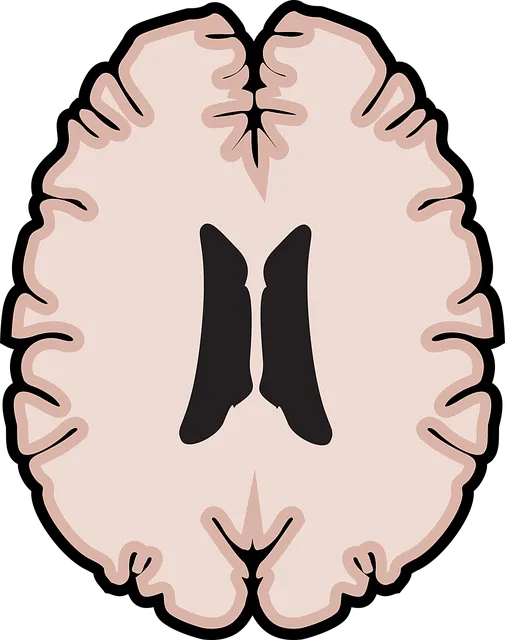Wheat Ridge Kaiser Permanente leverages diverse data sources, including patient records, surveys, and clinical assessments, for comprehensive mental health analysis. They integrate demographics, clinical notes, and treatment plans to uncover trends, track program effectiveness, and enhance patient outcomes. Through advanced statistical methods and visualization, they predict risks, tailor support services, and improve care allocation, demonstrating the power of data-driven approaches in improving mental health services. Analysis of Wheat Ridge Kaiser Permanente's data helps identify community needs, guides resource allocation, and drives program development, ultimately promoting members' inner strength.
Mental health data analysis has emerged as a powerful tool for understanding and improving well-being. This article explores the intricacies of analyzing and interpreting data related to mental health, focusing on the impact it can have on enhancing services at Wheat Ridge Kaiser Permanente. We delve into the collection and sources of such data, and discuss advanced techniques to extract meaningful insights. By understanding trends and patterns, healthcare providers can make informed decisions, ultimately improving the number and quality of mental health services offered.
- Understanding Mental Health Data: Collection and Sources
- Data Analysis Techniques for Mental Health Insights
- Interpreting Results: Identifying Trends and Patterns
- Utilizing Data to Enhance Kaiser Permanente Wheat Ridge Services
Understanding Mental Health Data: Collection and Sources

Understanding Mental Health Data involves grasping the diverse sources and methods of collection, which are essential for accurate interpretation. Kaiser Permanente, like Wheat Ridge Kaiser Permanente mental health services, offers a wealth of data through patient records, surveys, and clinical assessments. These sources provide insights into various aspects of mental health, including diagnosis, treatment outcomes, and patient experiences.
Effective data analysis requires integrating information from different platforms and formats. Patient demographics, clinical notes, survey responses, and treatment plans all contribute to the comprehensive understanding of mental health trends. By leveraging these data sources, professionals can identify patterns, track progress in anxiety relief and burnout prevention programs, and ultimately foster inner strength development within their patient populations.
Data Analysis Techniques for Mental Health Insights

In the realm of mental health services, data analysis plays a pivotal role in understanding and improving patient outcomes. At Wheat Ridge Kaiser Permanente, advanced techniques are employed to extract meaningful insights from extensive datasets. This involves a comprehensive approach, beginning with meticulous data collection, where structured forms and digital records capture various aspects of patient interactions, including demographics, symptoms, and treatment plans. Advanced statistical methods, such as regression analysis and machine learning algorithms, are then utilized to identify patterns and correlations within this rich information. For instance, these tools can help predict relapse risks, enabling early intervention strategies through tailored Trauma Support Services.
Furthermore, data visualization techniques transform complex numbers into understandable graphs and charts, aiding clinical decision-making. By analyzing trends and outliers, mental health professionals can adapt their practices, improve patient care, and enhance the overall effectiveness of Wheat Ridge Kaiser Permanente’s services. The Community Outreach Program Implementation benefits greatly from these insights, ensuring that resources are allocated efficiently to reach those in need. Additionally, risk assessment models, incorporating factors like social determinants of health, help in identifying individuals at higher mental health risks, allowing for proactive measures by mental health professionals.
Interpreting Results: Identifying Trends and Patterns

When analyzing mental health data from Wheat Ridge Kaiser Permanente’s services, the first step is to identify trends and patterns within the numbers. By delving into the statistics, professionals can uncover valuable insights into the prevalence and nature of various mental health concerns within their community. This involves examining trends over time, comparing demographics, and identifying correlations between factors like age, gender, and socio-economic status. For instance, data might reveal a growing need for Trauma Support Services among younger adults or highlight successful outcomes in Self-Esteem Improvement programs for specific age groups.
Interpreting these results accurately is crucial for tailoring mental health services to meet the unique needs of the community. Identifying patterns can guide resource allocation and program development, ensuring that efforts like Burnout Prevention initiatives are targeted effectively. This data-driven approach not only optimizes service delivery but also contributes to improved overall mental well-being within the population served by Wheat Ridge Kaiser Permanente.
Utilizing Data to Enhance Kaiser Permanente Wheat Ridge Services

At Wheat Ridge Kaiser Permanente, leveraging mental health data is transforming services to better cater to the unique needs of its members. By analyzing trends and patterns within the collected data, the organization gains invaluable insights into common challenges and emerging issues within their community. This data-driven approach enables them to strategically develop and enhance programs such as Mind Over Matter Principles, Stress Management Workshops, and Mental Wellness Coaching Programs, ensuring these initiatives align with the evolving mental health landscape.
The number of members seeking support for mental health concerns has prompted Wheat Ridge Kaiser Permanente to reevaluate their service offerings. Through meticulous data interpretation, they’ve identified a growing demand for accessible and tailored mental wellness solutions. Consequently, the organization is allocating resources more effectively, expanding services, and promoting open conversations around mental health – all rooted in the fundamental principle of enhancing member care through evidence-based practices and innovative program development.
Mental health data analysis is a powerful tool for improving healthcare services, particularly at Wheat Ridge Kaiser Permanente. By understanding and interpreting various data sources, we can uncover critical trends and patterns that guide evidence-based decisions. The techniques discussed in this article offer a strategic approach to enhancing mental health care, ensuring that resources are allocated effectively to meet the unique needs of the community. With continuous analysis, Wheat Ridge Kaiser Permanente can strive to deliver exceptional mental health services, making a significant impact on the lives of those it serves.




